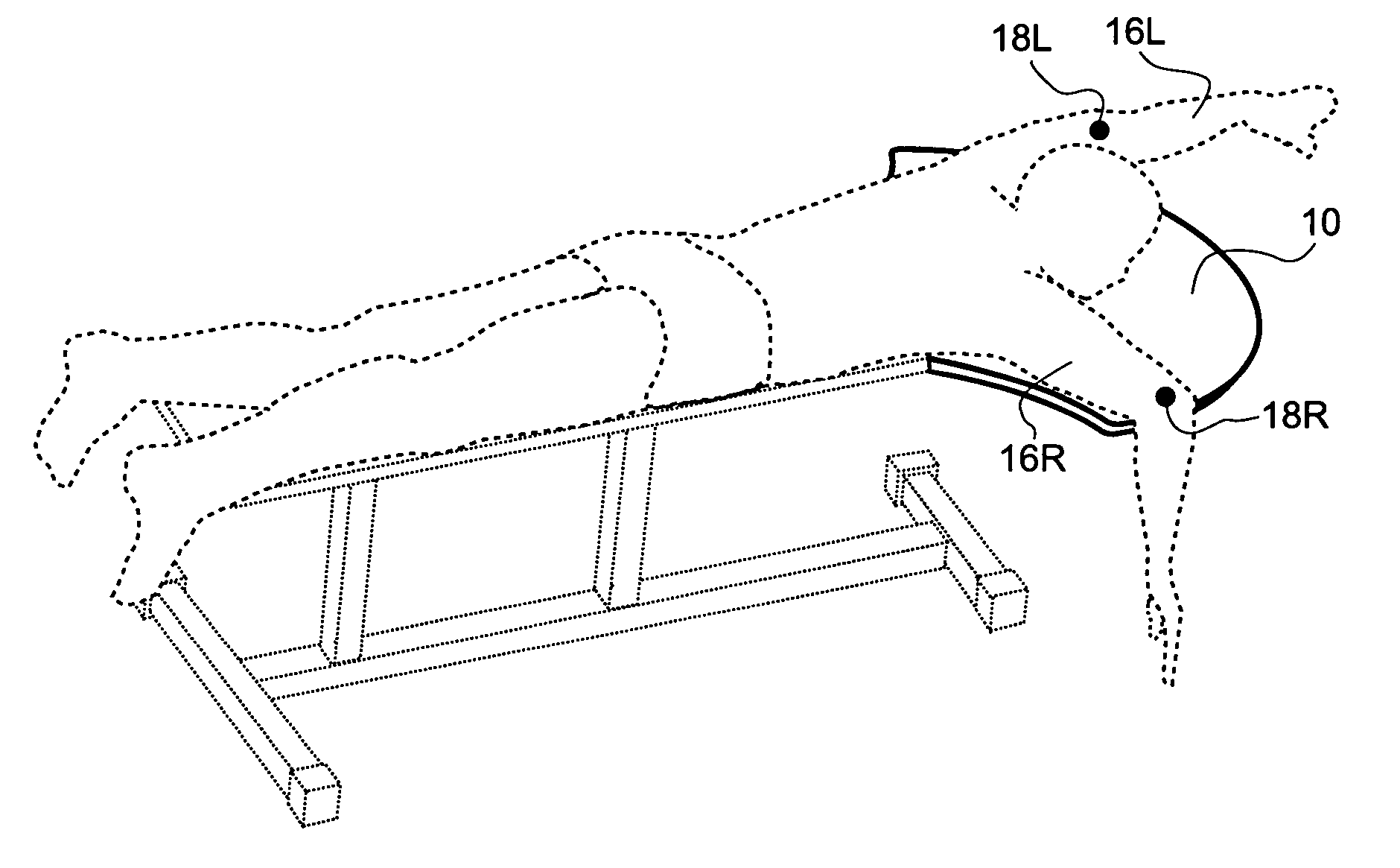Swim stroke guide
a stroke guide and stroke technology, applied in the field of swim stroke guides, can solve the problems of not providing simulation, no examples addressing techniques, and being effective when used, and achieve the effects of improving stroke efficiency, efficient swimming, and promoting two primary factors in the swim strok
- Summary
- Abstract
- Description
- Claims
- Application Information
AI Technical Summary
Benefits of technology
Problems solved by technology
Method used
Image
Examples
Embodiment Construction
[0029]FIG. 1 (top view) depicts the preferred embodiment of a guide (10) constructed with foamed PVC board. It may be constructed from a variety of materials including wood, plastic, aluminum, or metal. The guide's cut-away shape (11) allows a swimmer to finish each stroke near the torso.
[0030]FIG. 2 (side view) depicts the preferred embodiment of the guide (10). The thickness of the preferred guide is 3 mm to allow some flexibility during use, although it may be less or more thick as constructed from various materials.
[0031]FIG. 3 depicts the guide (10) attached to a bench (12) by means of ordinary screws or may include hardware such as a clamp or bracket (14) to allow the guide to be easily removable.
[0032]FIG. 4 depicts a freestyle swimmer in position to utilize the guide where the left arm (16L) is in the glide position ready to begin the High Elbow Catch and the right arm (16R) is mid-stoke illustrating how the guide keeps the arm in the High Elbow Stroke Path. The elbow joints...
PUM
 Login to View More
Login to View More Abstract
Description
Claims
Application Information
 Login to View More
Login to View More - R&D
- Intellectual Property
- Life Sciences
- Materials
- Tech Scout
- Unparalleled Data Quality
- Higher Quality Content
- 60% Fewer Hallucinations
Browse by: Latest US Patents, China's latest patents, Technical Efficacy Thesaurus, Application Domain, Technology Topic, Popular Technical Reports.
© 2025 PatSnap. All rights reserved.Legal|Privacy policy|Modern Slavery Act Transparency Statement|Sitemap|About US| Contact US: help@patsnap.com



